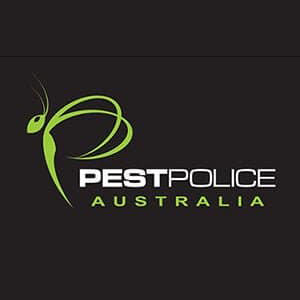Termites are a risk for almost every home in Australia. Despite their size, these tiny workers have a highly organised and structured social system and are a destructive force to be reckoned with. This makes termite protection a priority for every homeowner in Australia.
Termite damage can be a costly problem, but the good news is that there are ways to spot and prevent it. Termites are hardy insects, so you’ll want to be sure about your suspicions before calling a professional for inspection or treatment.
As a leading pest control expert in Melbourne, we will share how to identify termite damage in your home.
Let’s get started!
Tips to Identify Termite Damage in Your Home?
Termites are notorious for their ability to destroy homes and cause thousands of dollars in damage silently. These tiny pests can easily go unnoticed until it’s too late. Knowing how to identify termite damage in your home is important before it becomes a major problem.
Here are some signs to look out for:
- Hollow Wood – Hollow wood is one of the most obvious signs of termite damage. Termites eat wood from the inside out, leaving just a thin layer of wood on the surface. If you tap on a wooden structure and it sounds hollow, it could be a sign of termite damage.
- Buckling Floors and Walls – Termites can cause wooden structures to weaken, which can result in buckling floors and walls. You may notice that your floors or walls have become uneven or are sagging.
- Cracks in Walls and Ceilings – Termites can cause structural damage to your home, which can result in cracks in the walls and ceilings. These cracks usually appear near the corners of the walls and ceilings.
- Swollen Floors and Walls – Termites thrive in moist environments, so if you have a termite infestation, you may notice that your floors or walls have become swollen or have a water-damaged appearance.
- Clicking Sounds – Soldier termites bang their heads against the walls of their tunnels as a warning signal to other termites. If you hear clicking sounds coming from your walls, it could be a sign of an active termite infestation.
- Tight-Fitting Doors and Windows – Termites can cause wooden structures to warp, which can result in doors and windows that no longer close properly. If you notice that your doors and windows are suddenly difficult to close or seem to fit too tightly, it could be a sign of termite damage.
- Mud Tubes – Subterranean termites build mud tubes to travel from their nests to their food sources. These tubes are usually found near your home’s foundation and can be a sign of an active termite infestation. Mud tubes are often brown in colour and about the width of a pencil.
If you notice any of these signs in your home, it’s important to call a professional pest control company immediately. They can assess the damage and recommend a treatment plan to eradicate the termites and prevent further damage.
Sign That You Have an Active Termite Infestation
Termites are small insects that feed on wood and can cause significant damage to your home. Unfortunately, they can be difficult to detect once the damage is done. By knowing the signs of an active termite infestation, you can take action to prevent further damage.
- Discarded Wings – Termites swarm during mating season, and once they find a mate, they discard their wings. If you find piles of wings near windowsills or doors, it could be a sign that you have a termite infestation.
- Frass – Frass is termite droppings that look like small, wood-coloured pellets. You may find frass near window sills, doors, or other areas where termites are active.
- Swarming Termites – As mentioned earlier, termites swarm during mating season. If you notice a swarm of winged insects around your home, you likely have a termite infestation.
- Presence of Termites – If you actually see termites in your home, it is a sure sign that you have an active infestation. They are usually found in groups and are small, white or light-coloured insects with long wings.
Where to Look for Signs of Termite Damage?
By knowing where to look for signs of termite damage, you can take action to prevent further damage and protect your home. Let’s explore the key areas to check for signs of termite activity, including the exterior and interior of your home, attic, and basement.
The Exterior of Your Home
Start by checking the exterior of your home and paying close attention to the foundation, siding, and roof. Look for mud tubes, which are small tunnels made of mud that termites build to travel from their nests to their food sources. Mud tubes are usually found near your home’s foundation and can be a sign of an active termite infestation. You should also look for cracks or gaps in the foundation and siding, which can provide termites with easy access to your home.
Wooden Structures
Check all the wooden structures in and around your home, including decks, fences, and wooden furniture. Look for signs of hollow wood or wood that sounds hollow when tapped. You should also look for buckling or sagging structures, which can be a sign of termite damage. Additionally, check for frass, which are termite droppings that look like small, wood-coloured pellets.
Interior of Your Home
Check the interior of your home for signs of termite damage, paying close attention to areas where wood is present. Look for hollow-sounding walls, sagging floors, and cracks in the walls and ceilings. You should also look for mud tubes or termite droppings near windowsills, doors, and other areas where termites may enter your home.
Attic and Basement
Check your attic and basement for signs of termite damage, paying close attention to wooden beams and support structures. Look for mud tubes, frass, and hollow-sounding wood.
Professional Inspection
If you suspect that you have a termite infestation, it’s important to contact a pest control professional for a thorough termite inspection. A professional can identify the extent of the damage and recommend the best course of action to eliminate the infestation and prevent further damage.
By knowing where to look for signs of termite damage, you can take action to prevent further damage to your home. Early detection is key to preventing costly repairs, so be sure to check your home regularly for signs of termite activity.
How to Protect Your Home From Termite Damage?
Termites are one of the most destructive pests that can invade a home, causing significant damage that can be costly to repair. As a homeowner, it’s important to understand how to identify termites and take preventative measures to protect your property. This guide will provide you with a comprehensive overview of termite identification and protection that you can take to keep your home safe. With this knowledge, you can take steps to protect your home and minimise the risk of termite damage.
Identification
It goes without saying that identification is the initial termite defence strategy. Given that there are more than 1,000 different ant species in Australia, and it can frequently be challenging to distinguish between termites and ants, this is easier said than done.
Termite workers typically have pale, elongated bodies ranging from 5 to 10 mm. This makes them easier to distinguish from ants, which often have brown or black bodies. In contrast to ants with bent antennae and constricted waists, they also have straight antennae and a straight body.
Termites and flying ants are frequently confused when mating in the spring, but you can tell them apart just by glancing around you because termites shed their wings while flying ants do not.
Detection
Termites may not always be visible, but you can detect their existence if you know what to look for. Keep an eye out for termite wings along window sills since they lose them during their winged spring mating cycles.
Another classic sign of a termite infestation is a timber that sounds hollow when tapped; termites produce this by consuming the interior of a pillar and excavating tunnels inside. Mud tubes outside walls, beams, and other small openings are another sign of termites; termites use these tunnels to safely travel from birds and other predators.
Protection
Termites can cause significant damage to your home, making it important to take preventative measures to protect your property. Following a few simple steps can reduce the risk of termite infestation and keep your home safe.
Keep Your Areas Dry
Termites, like most other species on the planet, are drawn to locations with easy access to water because they need it to survive. Ensuring all house foundations and exposed surfaces are dry throughout the year is a wonderful termite protection approach.
This calls for repairing leaky faucets, air conditioners, and water pipes, clearing clogged gutters, sealing entrance points around pipes and water lines, and keeping all water-retaining materials, such as garden beds, far away from the foundations.
Eliminate Food Sources
Don’t supply them with food! Termites won’t want to live in your house if they have nothing to eat.
To do this, keep all lumber, firewood, and paper away from the house’s foundation and exterior spaces. Although the materials used to build a house are typically treated to prevent termites, you should clear the area of any laying stumps and trash, install screens over any exterior vents, and cover any channels that could lead to exposed timber or foundations. Also, routinely inspect all decks and fences for termite damage.
Proper Ventilation
Termites seek out confined, enclosed areas with little to no ventilation when establishing new colonies because these areas typically offer safety for the queen and eggs.
Keeping termites out of your home can be greatly aided by ensuring that all spaces, including crawl spaces and places under the floor, are properly ventilated. To do this, ensure the spaces are clean of clutter or obstructions and that every vent is operational.
Regular Pest Control
Mother Nature can sometimes outwit us despite our best efforts and pose challenges like termites for us to conquer. These problems are frequently time-consuming, expensive, and complicated, with the possibility of recurrence. Leaving it to the pros is the most efficient strategy for termite protection.
As identifying and eliminating termites is their line of work, experts are equipped with the necessary knowledge and tools.
Protect Your Home from Termite Damage with Pest Police
Termite infestation is a serious issue that can cause significant damage to your home. Taking preventative measures to protect your property and identify any signs of infestation early on is important.
If you suspect that you have a termite problem, it’s best to contact a professional pest control company like Pest Police Australia. With our expertise and experience, we can provide effective treatment options to eliminate the infestation and prevent future damage.
Don’t let termites take over your home – contact us today for a thorough inspection and peace of mind.

